Melbourne International Flower & Garden Show 2014
After a year’s absence, I again visited the nation’s biggest horticultural exhibition.
It has been two years since I last attended the Melbourne International Flower and Garden Show (MIFGS) at Melbourne’s Royal Exhibition Buildings and Carlton Gardens. I don’t wish to write an elaborate description of the layout of the show as I have done that before. Rather, I want to share some highlights and some thoughts about what I liked about MIFGS 2014 and what I didn’t.
Since childhood this event has been a highlight on the calendar for me and I have watched MIFGS develop into the gargantuan festival of horticulture that it is today.
As per usual, the Royal Exhibition Buildings were filled with displays from floristry vendors, floral artisans and various community groups such as the Royal Horticultural Society of Victoria.
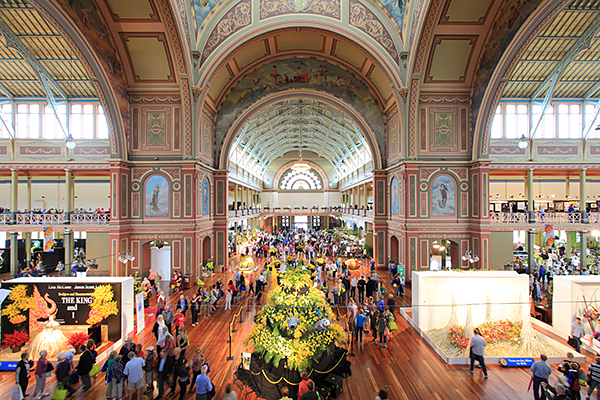
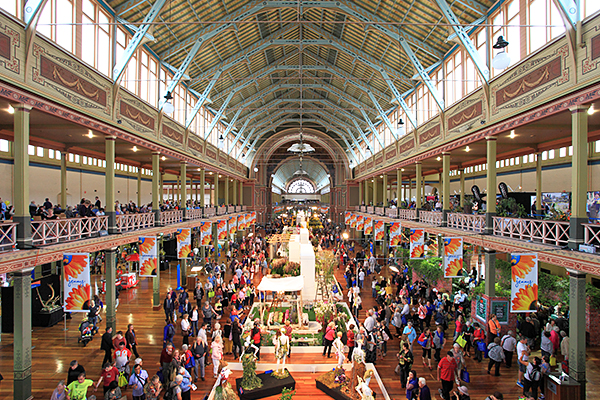
I was rather impressed this year with the creative floral displays. Students from the various TAFE colleges had entered submissions and presumably vied for a prize. I felt that the quality of the displays was improved this year with a great deal of creativity and skill exhibited by many of the entrants. Whilst simple, this ‘spilled paint’ display from Ross Jenkins of the Northern Metropolitan Institute of TAFE particularly impressed:
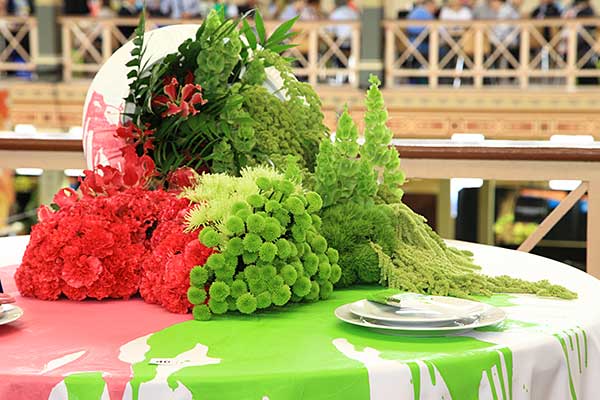
Upstairs, there were a wide variety of stallholders of varying quality. One of my favourites was from a business that sells fairy lights decorated with leaves that have been coloured and added to the lights. I have seen this stall at the Queen Victoria Market. There’s something about those pretty lights that just draws me in every time…
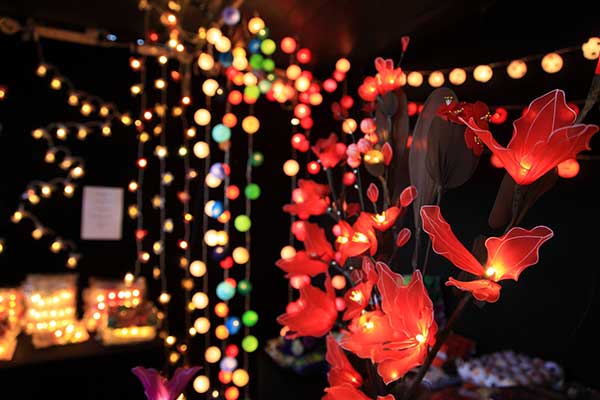
Downstairs, the displays were far more elaborate. One of my favourites was this display which featured a massive collection of flowers above an illuminated cup that was somewhat reminiscent of the Royal Horticultural Society (UK) Award of Garden Merit logo. I really liked it and clearly many others did too because large crowds were drawn to it.
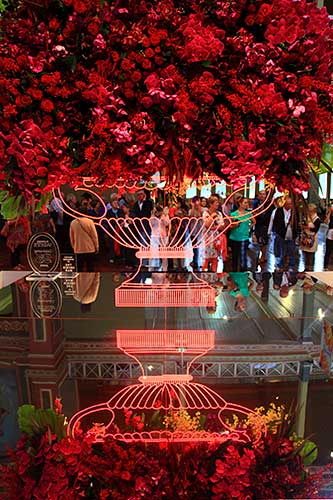
I also liked this ‘wall’ display of lilies embedded in some sort of fabric mesh:
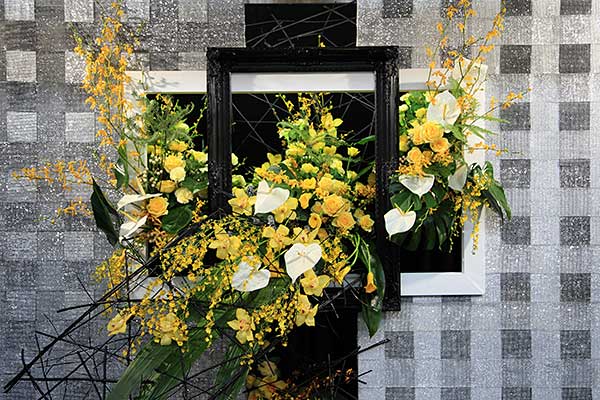
More traditional floral displays were also included in the show. These orchids and delphiniums that sat atop bamboo tee-pees looked great:

This is perhaps a curious observation for an avid photographer to make, but I noted a lot of smart phone photography at this show. Presumably the millions of photos taken end up on Flickr or Facebook. Either way, it was somewhat amusing to watch as streams of people lined up to frame photos with their mobile phones out in front of them. It seems as if the mobile phone has almost entirely replaced the point-and-shoot camera these days.
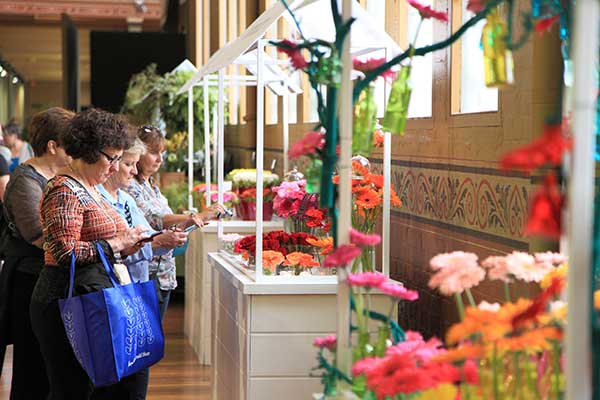
The outside part of the show in the Carlton Gardens is always my favourite. I especially enjoy visiting the growers’ stands because there are always new varieties of plants to discover. One of my favourite finds this year is Salvia mexicana ‘Little Limelight’. Growing to approximately a metre in height, this magnificent plant produces intense blue-purple flowers surrounded by a lime green calyx at the base.
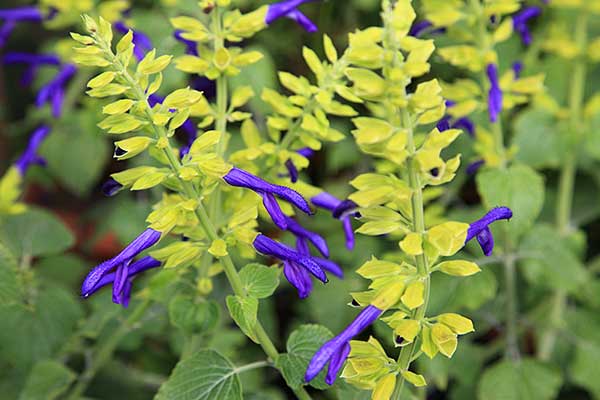
Another eye-catching plant for me was Agastache mexicana ‘Lemon Fiesta’. Related to the genus Salvia in the family Lamiaceae, this plant is an upright herbaceous perennial with lemon yellow flowers and a dark calyx at the base.
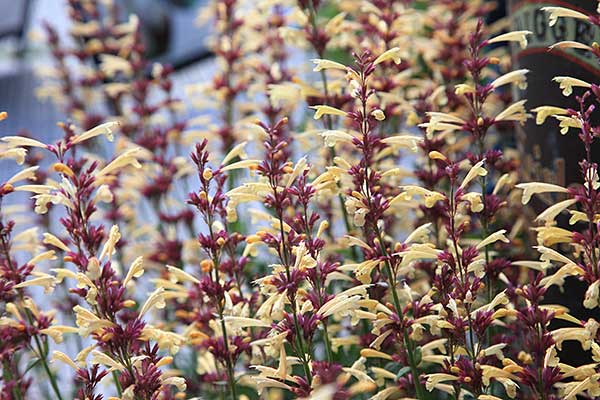
Perhaps readers will see a pattern to my selections this year, because I was also attracted to the unusual Salvia koyamae ‘Yamagata’.
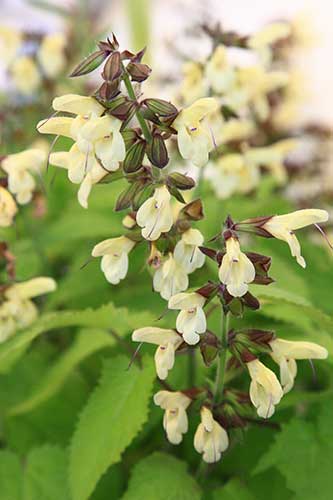
Salvia koyamae is a relatively rare perennial sage native to the Japanese island of Honshu. The cultivar ‘Yamagata’ has beautiful pale lemon flowers that emerge above vivid apple green foliage in the warmer months of the year.
In addition to growers’ stands and product manufacturers, there were a small number of display ‘gardens’ to admire. I always like looking at the display gardens, even if I am forced to question their practicality or longevity on some occasions. Such display gardens can provide design inspiration and demonstrate the use of certain garden plants in the landscape.
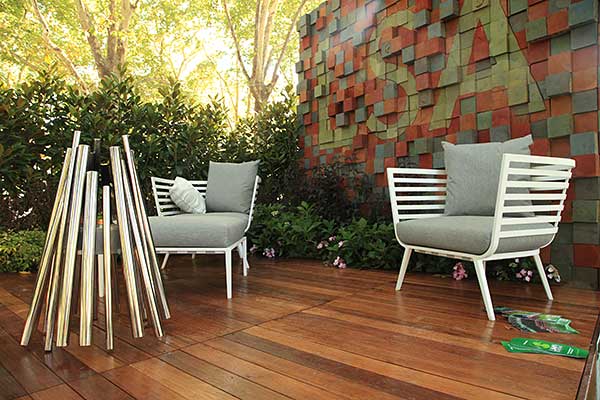
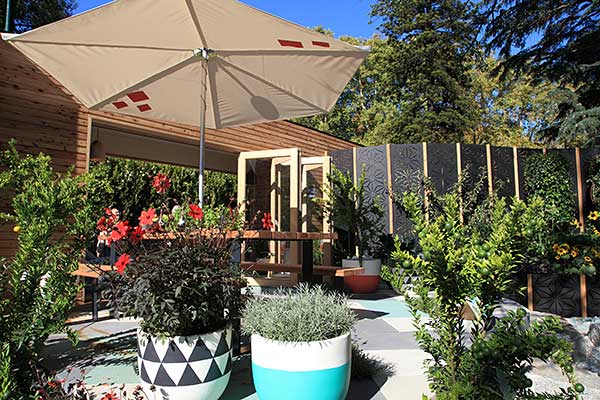
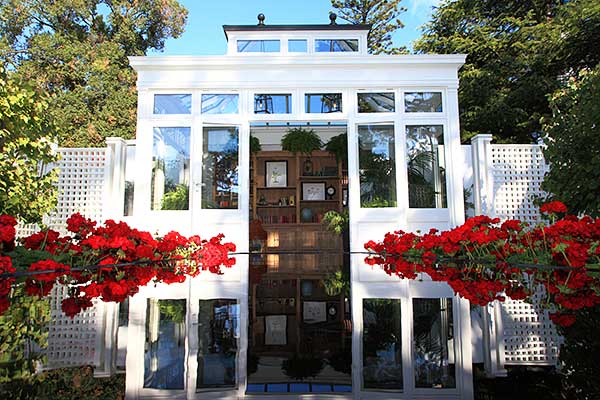
Although not evident from the above photographs, rusted steel seems to be the favourite sculptural material of 2014. Its use was widespread amongst sculptures throughout the show.
It seemed to me that the show has shrunk again this year (I say ‘again’ because I noticed that it seemed smaller last time too). It certainly seemed to me that there were fewer stalls, fewer display gardens and the footprint of the show on the Carlton Gardens seemed to have shrunk as a result. The notable absence of the educational institutions (such as University of Melbourne – Burnley College, Holmesglen TAFE and NMIT) as well as other public entities such as the Royal Botanic Gardens Melbourne seemed indicative of unfortunate budgetary constraints.
Nevertheless, the show was as popular as ever and I was again grateful that I took a day off work to visit on a weekday instead of wait for the weekend and suffer the crowds.
I do have one criticism of this year’s show. For some inexplicable reason, the front doors of the Royal Exhibition Building were not opened. In order to access the building, one had to walk to the side of the building which lengthened the journey considerably. This decision effectively divorced the internal and external parts of the show from each other which I felt made the event appear disjointed. Furthermore, the side entrance of the building opened onto a circular arrangement of stalls that were positioned so as to have their rears facing the rest of the show. This effectively separated these stallholders from everyone else and looked rather unattractive when one approached the Royal Exhibition Buildings from the gardens. I’d suggest to the organisers that they not repeat this mistake in future.
Aside from those concerns, I had an enjoyable day out. I was unable to walk away from the show without making a few plant purchases, but that’s to be expected under the circumstances.
Comments
5 responses to “Melbourne International Flower & Garden Show 2014”
It was a real pleasure to read your latest blog.
Flowers, whether arranged so cleverly as many of the exhibits shown in the array of delightful photos that accompany your blog, or just a mass of colour, never fail to lift ‘our spirits’ and bring happiness .
It is many years since I visited the show, but I can still, with help from your blog, remember how lovely it was. Apart from having to queue for such a long time to buy ‘something to eat’ (and pay very well) it was a lovely outing.
Apparently, the show is as popular as ever, many people enjoying the day out.
I am not surprised you found a plant or two to find you must have! I wonder if one was the Salvia ‘Little Limelight’? It looks very attractive.
A time of quiet enjoyment spent reading your thoughts on your ‘day out’
We went last year and took two foreign born guests with us. I agree with you about the side entrance. We all liked the floral displays in the Exhibition Building, but the outside area was just a big market shop. It was a very expensive outing to see an indoor floral display and shops. I can’t see myself ever going again.
I cast my mind back to its early days at Burnley and it was a marvellously interesting place to visit where we learnt about plants, designs and a whole lot more, without a strong commercial push.
Hi
Just wondering about your comments “the abscence” of the educational institutions? Are you referring to the achievable gardens? If so they were out in force and some wonderful designs by all the entrants .
All the best
Kingsley
Hi, Great to see MIFGS and plants being blogged about!
I just thought I would take a moment to say that the University of Melbourne was there with a large display – the red shipping container with a green roof and walls, an urban forest and a veggie raingarden. You can read more and see lots of pictures at: http://www.land-environment.unimelb.edu.au/news-and-events/events/melbourne-international-flower-and-garden-show.html#better-homes-and-gardens.
Thanks!
Hello Claire,
Somehow I managed to miss the University of Melbourne display, so I apologise for falsely reporting your absence.